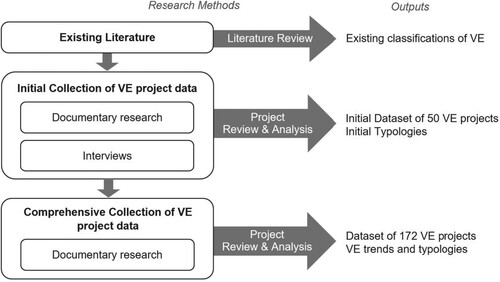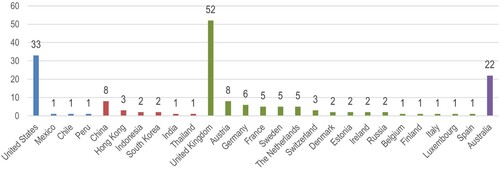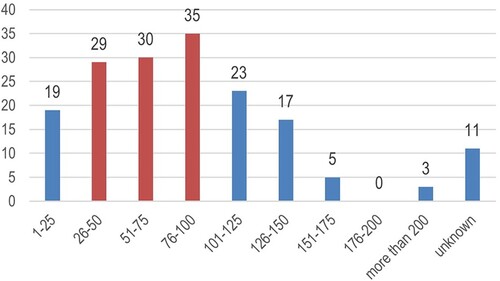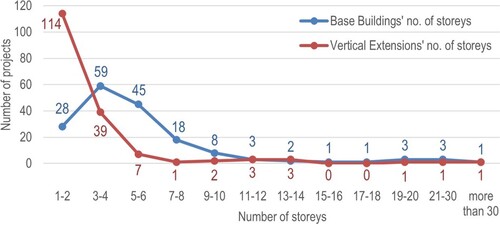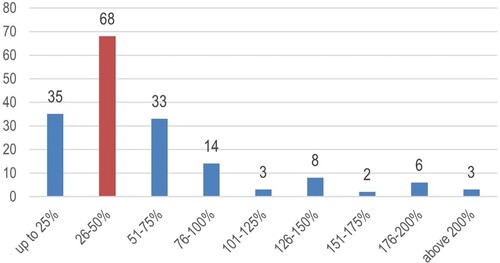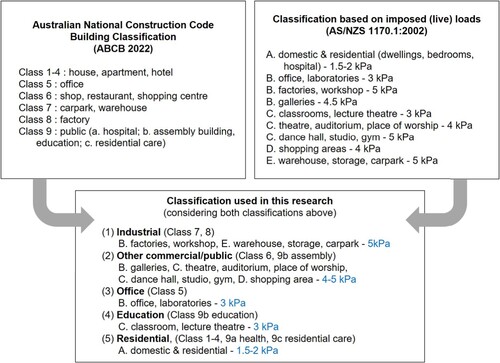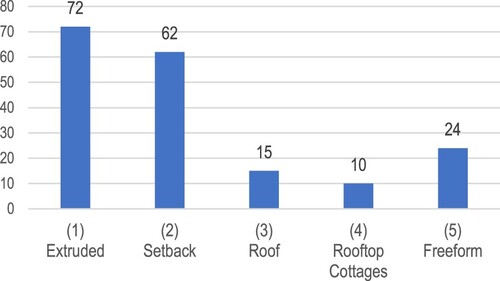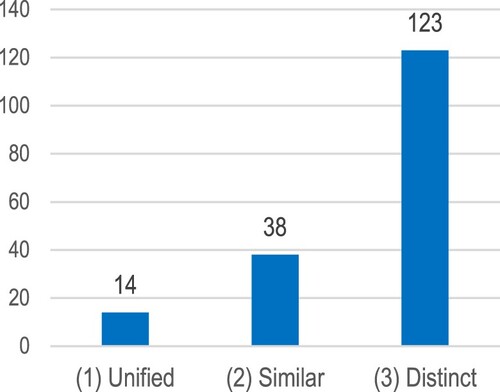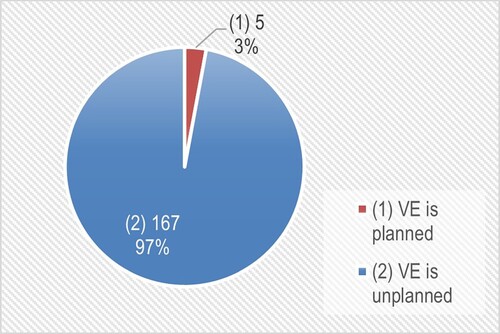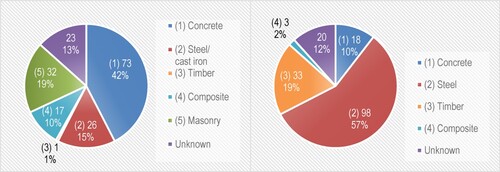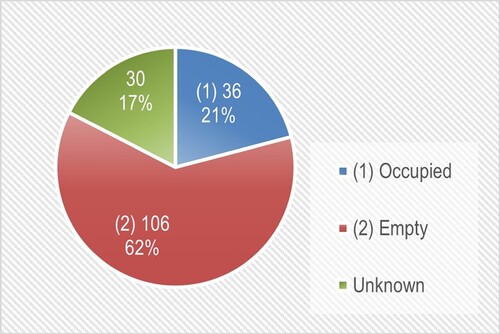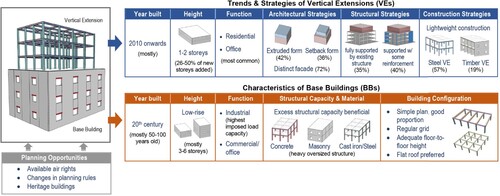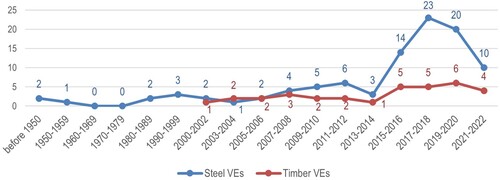Abstract
New spaces to accommodate growing urban populations should be created in a way that also reduces building lifecycle carbon emissions. In this context, the vertical extension (VE) has emerged as a novel building typology that can increase space in cities through the construction of additional floor area atop existing base buildings. This paper presents a review of 172 VE projects worldwide to provide an understanding of their design and construction trends, and to classify the technologies applied. Results show that VE construction has accelerated significantly over the past decade. Although most VEs consist of only small vertical additions, often one to two storeys, higher VEs can be built with innovative structural strategies and lightweight materials. Industrial buildings are often found to provide significant opportunities for VE due to their higher structural capacity. By comparing the characteristics and design of VEs, typologies based on architectural, structural, and construction technologies are presented.
Introduction
Minimising whole lifecycle carbon emissions from the building sector is a global necessity, since building-related emissions are responsible for 37% of energy-related greenhouse gas emissions (UNEP Citation2021). The need to reduce embodied carbon, which is the greenhouse gas emissions associated with materials, construction, maintenance and demolition, disposal and recycling of a building, is becoming increasingly influential (De Wolf, Pomponi, and Moncaster Citation2017; Helal, Stephan, and Crawford Citation2020; Nadoushani, Moussavi, and Akbarnezhad Citation2015; Röck et al. Citation2020) with embodied carbon being shown to be responsible for 27-70% of a typical building’s lifecycle emissions (Pomponi and Moncaster Citation2016; Robati et al. Citation2021). Such figures are likely to increase, as new building development in many regions aspired for net-zero operational performance by 2030, meaning embodied carbon could be responsible for 100% of lifecycle emissions in many new buildings, in only a few years.
Simultaneously, there is a demand for increased space in urban areas. Urban growth is fuelled by population increases, rapid urbanisation, globalisation, economic development, and wealth. In 2018, roughly 55% of the world’s population were urban dwellers, but this was predicted to increase to 60% in 2030 and 68% in 2050 (United Nations Citation2019). To accommodate this growth, it is suggested an additional 230 billion square metres of floor area is needed, doubling existing floorspace by 2060 (UNE and IEA Citation2017). Between 2010 and 2020, a 12.5% increase in the global population caused a 22.5% rise in floor area (UNEP Citation2021) not only to satisfy the space demand but also economic growth. While much of this growth is fuelled by increases in wealth and the demand for larger living spaces, there is also a legitimate demand for new buildings to support the health and well-being of society, with some 1.6 billion people living without adequate shelter (Habitat for Humanity Citationn.d.).
Acknowledging the negative impacts of urban sprawl, future space demand should be met in a way that supports urban densification and compact city forms as part of sustainable urban development models (Broitman and Koomen Citation2015; Hernandez-Palacio Citation2014; Mouratidis Citation2019; Neuman Citation2005; Oldfield Citation2019; Stevenson et al. Citation2016; United Nations Citation2017). Since preserving green and rural regions is crucial to ensure a healthy urban environment, creating new floorspace in a sustainable manner often relies on brownfield development (Cappai, Forgues, and Glaus Citation2019; Dulić and Krklješ Citation2014; Smith Citation2008). Nonetheless, if this development includes the demolition of existing buildings and creation of new construction, significant waste and carbon emissions will be produced.
The Vertical Extension (VE), in which an extra storey(s) is built atop an existing base building, has emerged as a novel solution to increase urban floor area while preserving existing buildings, thus minimising whole lifecycle emissions. While VE can be found as early as the eighteenth or nineteenth century (Artés, Wadel, and Marti Citation2017; González-Redondo Citation2022), a holistic understanding of the design, construction, and technological trends of VEs at global scale is limited. This paper aims to document and classify in detail technological approaches of VEs through a comprehensive review of 172 VE projects worldwide. In doing so, the following research questions are answered:
What are the trends associated with VE construction?
What different types of VE are being built?
What are the different architectural, structural, and constructional technologies used in VE projects in different contexts?
Vertical extension (VE) as an emerging typology
Existing terms, definitions, and benefits
Some studies use the term ‘vertical extension’ (VE) to represent the additional floor(s) atop existing buildings (Argenziano et al. Citation2021; Artés, Wadel, Marti Citation2017; Bergsten Citation2005; Dind, Lufkin, and Rey Citation2018). Others call this ‘vertical expansion’ (Jellen and Memari Citation2018; Thornton, Hungspruke, and DeScenza Citation1991), ‘rooftop extension’ (Aparicio-Gonzalez, Domingo-Irigoyen, and Sánchez-Ostiz Citation2020; Floerke et al. Citation2014; Wijnants, Allacker, and De Troyer Citation2019), ‘roof stacking’ (Amer et al. Citation2017; Amer, Mustafa, and Attia Citation2019), ‘upward extension’ (Morris Citation2021), ‘aufstockung’ (Eliason Citation2014; Floerke et al. Citation2014), or simply ‘adding floors to existing buildings’ (Soikkeli Citation2016; Uwimana Citation2011).
A few studies present specific definitions of VE. For instance, Floerke et al. (Citation2014) define VE as ‘a structure that is constructed upon the top floor-space – generally the roof – of an existing building, adding one or more storeys’ and suggest that VE is a ‘re-densification solution’ in the urban environment. The existing literature also documents a variety of environmental, social, and economic benefits of VE, as listed in Table .
Table 1. Benefits of VEs recognised by existing literature.
Development of vertical extensions
VEs have been constructed for centuries, especially in Europe (Eliason Citation2014; González-Redondo Citation2022), but they have become more frequent with the urgency of urban densification and a growing concern about building emissions. Hence, most literature on this topic has emerged in the twenty-first century. At the building scale, most studies examine low-rise VE solutions (one to three storeys high) (Aparicio-Gonzalez, Domingo-Irigoyen, and Sánchez-Ostiz Citation2020; Argenziano et al. Citation2021; Artés, Wadel, Marti Citation2017; Dind, Lufkin, and Rey Citation2018; Jellen and Memari Citation2018; Soikkeli Citation2016), with fewer studies examining multi-storey or high-rise VEs (Hermens, Visscher, and Kraus Citation2014; Uwimana Citation2011). VEs have also been investigated at a neighbourhood level (Amer et al. Citation2017; Aparicio-Gonzalez, Domingo-Irigoyen, and Sánchez-Ostiz Citation2020) and component level (Lešnik et al. Citation2020; Wijnants, Allacker, and De Troyer Citation2019). Among these studies, some looked at specific building functions, such as residential VEs (Amer, Mustafa, and Attia Citation2019; Jellen and Memari Citation2018; Soikkeli Citation2016), and office VEs (Dind, Lufkin, and Rey Citation2018). Most research suggests that offsite construction and modular building systems are the most suitable construction methods for VEs, with lightweight materials (steel/timber) seen as preferable (Amer, Mustafa, and Attia Citation2019; Bergsten Citation2005; Dind, Lufkin, and Rey Citation2018; Hermens, Visscher, and Kraus Citation2014; Jellen and Memari Citation2018).
Some studies have reviewed and classified VEs (Table ), in terms of their construction methods (Amer, Mustafa, and Attia Citation2019), form (Floerke et al. Citation2014), function (Ambrosini and Callegari Citation2021), and structural strategies (Hermens, Visscher, and Kraus Citation2014; Sundling Citation2019). However, most studies are in the European context, with little knowledge in other regions. Furthermore, most classifications are based on a single criterion (i.e. construction method, form, structural strategy) and focus on low-rise VEs. This study looks at VE implementations from a wider context and provides a review of VE technologies from multiple perspectives comprehensively. Through reviewing 172 VE projects worldwide, this paper presents the global trends on the evolution of VEs while documenting different designs and technologies from real projects, and classifies VEs based on architectural, structural, and constructional aspects. It presents what kinds of buildings are being extended and what strategies are applied.
Table 2. Existing Classification of VEs.
Research methodology
A mixed method approach of literature review, documentary research, and stakeholder interviews was utilised in this research (Figure ). First, a literature review was performed to identify the existing knowledge and classifications of VE. Then, VE projects worldwide were collected through a documentary research process (Bowen Citation2009; Tight Citation2019), in which information about a particular project was gathered from multiple sources – academic documents (journal/conference papers and reports), official documents (government records, development application documents), popular resources (newspaper/magazine articles), and institutional resources (company website, press release). Semi-structured interviews and correspondence with professionals involved in some projects (architects, structural engineers, developers, contractors) were also undertaken to obtain project information.
A final dataset of VE projects was created based on information obtained. A predefined template was used to determine what types of information should be retrieved, then information on each project was assembled based on this template. Due to the complex and diverse characteristics of VE, this template was adapted during the data collection. The final template is provided in Appendix. For each project, information collected includes project location, organisations involved, information about the base building and its VE (i.e. year built, number of storeys, function, structural material), alongside architectural, structural, and construction approaches. In this research, VE is defined as constructing one or more storeys of new permanent inhabitable space on top of an existing base building. Thus, project inclusion and exclusion criteria are predefined to decide whether a specific VE project would be included or not in the dataset (Table ).
Table 3. Project inclusion and exclusion criteria.
Results
A total of 172 VE projects were reviewed as part of this research. They are located across four regions: 36 in America (21%), 17 in Asia (10%), 97 in Europe (56%), and 22 in Oceania (13%) (Figure ), and spread over 27 countries (Figure ). The three countries with the greatest number of projects are the United Kingdom, the United States and Australia with 52 (30%), 33 (19%), and 22 (13%) projects.
Construction period and time gap
The construction periods of VEs and the base buildings (i.e. the original buildings that sit beneath VEs) were gathered to understand whether buildings from certain eras were extended more frequently. Figure (a). shows the completion periods for the base buildings. A total of 180 buildings are shown, because in seven projects, the VE was built atop two/three buildings. The chart shows that most base buildings were built in the twentieth century (125 out of 180 buildings, 69%), with a quite even split across the century (i.e. 19–30 buildings every 20 years). This suggests a wide array of buildings from different eras can facilitate VEs, with little limitation of construction period. There was a small drop in frequency of base buildings between 1940-1979. This is likely due to both the second world war (and subsequent reduced construction), and some buildings from the post-war era being less suited to VE economically. In an interview a developer revealed that:
Buildings from the sixties and seventies are not very good to be extended, often there was a lot of postmodern design, the structures weren't as repetitive, they didn’t have good floor-to-ceiling heights. So, the economics in trying to extend vertically those buildings is very different …
Figure 4. Construction periods of: a. base buildings (left); b. VEs (right). Note: There are 180 base buildings and 172 VEs, because in 7 projects, VEs were built atop 2–3 base buildings.
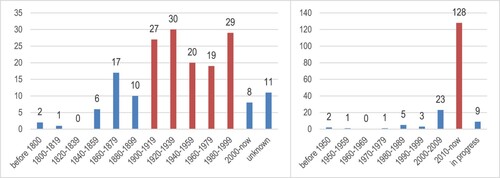
Figure (b) presents when the VEs were constructed. The graph shows that although there is a record of VE stretching back before 1950, it is very much a contemporary trend, with 137 of 172 projects (80%) completed/in progress since 2010.
By comparing the construction periods of base buildings and their VEs, time gaps can be determined. Figure shows that the most common time gap is 76–100 years (35 projects, 20%), followed by 51–75 years (30 projects, 17.4%) and 26–50 years (29 projects, 16.9%). Moreover, the time gaps are more than 50 years for 113 projects (66%), and more than 100 years for 48 projects (28%), showing that VEs are often built atop historic/old buildings, rather than more contemporary ones.
Number of storeys and percentage of storeys added
The numbers of storeys of base buildings and their VEs were collected to understand to what extent VEs have been utilised to create additional space, and whether VEs were mostly built atop low-rise or high-rise buildings. Among 172 projects reviewed, the height of the base buildings above grade ranges from one storey up to more than 30 storeys (Figure ). The blue line shows that the base buildings are mostly 1–6 storeys (132 out of 172 projects, 77%) with 3–4 storeys (59 projects, 34%) as the most common, followed by 5–6 storeys (45 projects, 26%). The highest base building is in the South Bank Tower in London (31 storeys), which had 11 storeys added on. The red line shows that most VEs are 1–2 storeys (66%). This highlights that most VEs do not add significant extra capacity. Nevertheless, there are examples of taller VEs among the projects reviewed. The tallest VE found was the Greenland Centre in Sydney, in which a 40-storey VE was built atop a 26-storey building. In addition, the Blue Cross Blue Shield in Chicago (Figure (1)), consists of a 24-storey VE built atop a 30-storey building (albeit this extension was pre-planned – see also Structural Strategies section).
Figure shows the percentage of storeys added (VE’s number of storeys) compared to the base building’s number of storeys. This percentage varies from below 25% to above 200%, with 26-50% as the percentage for most projects (68 projects, 40%). The highest percentage is found in The Hero in New York, where a 19-storey VE was built atop a 5-storey building, resulting a 380% of storey addition.
Project function and functional change
To classify the projects based on functions of the base buildings and their VEs, a functional classification was predefined by considering the classification from the Australian National Construction Code (ABCB Citation2022) and the imposed load requirements of each building type (AS/ NZS 1170.1:2002) (Figure ). Classification based on imposed loads (typical live loads) was used to examine whether different load requirements of specific building functions influence the realisation of VEs.
The base buildings of the projects reviewed were classified into five distinct functions based on the typical live loads the typology requires (Figure (a)): (1) industrial (factory, warehouse, car park, showroom, military facility); (2) other commercial/public (shopping centre, retail, gallery, museum, church, restaurant); (3) office; (4) education (school, university); (5) residential (single-family house, apartment, hotel, hospital). The most common building type found as the bases of VEs were industrial buildings (57 out of 180 buildings, 32%), followed by office (27%) and residential (24%). Figure (b). shows that most VEs were built to accommodate residential functions (96 out of 172 projects, 56%), followed by office purposes (53 projects, 31%).
Figure 9. Functions of: a. base buildings (left); b. VEs (right). Note: There are 180 base buildings and 172 VEs, because in 7 projects, VEs were built atop 2–3 base buildings.

Observing the functional changes of the base buildings, in 50% of the projects, the original function remained, while in 50% it changed. Figure shows that most industrial buildings experienced a change of function (both before and during the VE process). Whereas, for base buildings with other functions (office, education, other commercial/public, residential) the original function mostly remained. In 115 out of 172 projects (67%), VEs were performed alongside the refurbishment of the base buildings, either to accommodate functional changes or to adjust them to the current building standard/requirements.
Figure 10. Functional changes of base buildings and VEs’ functions. Note: Each node shows ‘[building function]: [no. of buildings]’. In this diagram, the number of buildings considered has been adjusted. Where multiple base buildings were located beneath a VE, these have been counted as a single building to ensure consistency in the Sankey diagram, except if they had different functions, resulting a total of 173 buildings in the graph.
![Figure 10. Functional changes of base buildings and VEs’ functions. Note: Each node shows ‘[building function]: [no. of buildings]’. In this diagram, the number of buildings considered has been adjusted. Where multiple base buildings were located beneath a VE, these have been counted as a single building to ensure consistency in the Sankey diagram, except if they had different functions, resulting a total of 173 buildings in the graph.](/cms/asset/9efd2bcb-82b3-497b-ac48-6119dd359015/tasr_a_2240289_f0010_oc.jpg)
Architectural strategies
Two distinct architectural strategies were examined: form and facade design of VEs. It was found that heritage status of the base building and VE’s footprint ratio often influenced the selection of architectural strategies. In the case where the base building was heritage-significant, VE development would likely need to comply with certain restrictions, e.g. facade preservation, setback requirements. Regarding VE’s footprint ratio (ratio of VE’s footprint compared to the base building’s footprint), most projects generally aimed to maximise additional space created and achieve a footprint ratio close to 100%, but due to some functional considerations or setback provisions, this was not always possible. Hence an average footprint ratio for 172 projects is 91%.
Form of VE
When considering the form of the VE as compared to the base building, five different strategies are identified (Figure ):
Extruded form, in which VE has the same form as the base building, and the VE’s footprint ratio is nearly 100%.
Setback form, in which VE has the same form as the base building but with a setback on the front elevation, on two/more faces, or has some recessed areas.
Roof form, in which VE appears as the roof of the base building.
Rooftop cottages, in which VE appears as a few/cluster of small houses/cottages atop the base building.
Freeform, in which VE has a distinct form, footprint, or axis with the base building, cantilevered from the base building, or connected with a horizontal extension.
Figure 11. Five forms of VEs identified along with examples of projects: (1) extruded – Adina Apartment Hotel, Melbourne; (2) setback – Deco Building, Sydney; (3) roof – Trikafabriken 9, Hammarby Sjostad; (4) rooftop village – Didden Village, Rotterdam; (5) freeform – Substation 164, Sydney [images courtesy of: (1) © Peter Clarke; (2) © Brett Boardman; (3) © Felix Gerlach for Tengbom; (4) © Rob t Hart for MVRDV; (5) © author] .
![Figure 11. Five forms of VEs identified along with examples of projects: (1) extruded – Adina Apartment Hotel, Melbourne; (2) setback – Deco Building, Sydney; (3) roof – Trikafabriken 9, Hammarby Sjostad; (4) rooftop village – Didden Village, Rotterdam; (5) freeform – Substation 164, Sydney [images courtesy of: (1) © Peter Clarke; (2) © Brett Boardman; (3) © Felix Gerlach for Tengbom; (4) © Rob t Hart for MVRDV; (5) © author] .](/cms/asset/4afa6609-4cc2-44a2-b9f9-e95c9001d02a/tasr_a_2240289_f0011_oc.jpg)
Facade design of VE
By comparing the facade of the VE with its base building, three facade design strategies are identified:
Unified facade, in which VE has the same facade as the base building, so that it is difficult to distinguish between the old and new.
Similar facade, where VE’s facade adopts some characteristics of the base building’s facade (i.e. same/similar rhythm, colour, and/or material), but the VE can still be identified as a new addition.
Distinct facade, where VE’s facade has a different rhythm, colour, or material, and is easily differentiated from the base building.
Figure 13. Examples of VE projects and their facade strategies: (1) unified facade at Blue Cross Blue Shield; Chicago; (2) similar facade at Midtown Centre, Brisbane; (3) distinct facade at De Karel Doorman; Rotterdam [images courtesy of: (1) © James Steinkamp Photography for Goettsch Partners; (2) © AM Brisbane CBD Investments & DMC Projects; (3) © Ibelings van Tilburg architecten, Ossip van Duivenbode] .
![Figure 13. Examples of VE projects and their facade strategies: (1) unified facade at Blue Cross Blue Shield; Chicago; (2) similar facade at Midtown Centre, Brisbane; (3) distinct facade at De Karel Doorman; Rotterdam [images courtesy of: (1) © James Steinkamp Photography for Goettsch Partners; (2) © AM Brisbane CBD Investments & DMC Projects; (3) © Ibelings van Tilburg architecten, Ossip van Duivenbode] .](/cms/asset/2c897e35-4d6e-4682-8070-2017caef399f/tasr_a_2240289_f0013_oc.jpg)
Structural strategies
The analysis of structural strategies considered two factors: planned/unplanned VE and structural support strategies.
Planned/unplanned VE
Two distinct typologies are identified (Figure ):
Planned VE, in which the VE is purposely planned at the time of initial design of the base building. Blue Cross Blue Shield (Figure (1)) is an example of this where a 24-storey VE was planned as part of a long-term expansion of the 30-storey office building. Among 172 projects, only five (3%) have planned VEs, and in two of them, the realisation of VE exceeded the originally planned height. The Adina Apartment Hotel in Melbourne is an example of this (Figure (1)), where the base building was designed to support a 6-storey VE, but in the end a 10-storey VE was built using CLT. The architect shared:The developers knew that they could build 6 levels extension with concrete, but they were looking for 220 hotel rooms to get their best return from investment. So, anything smaller probably would have meant that the project wouldn't have gone ahead. With timber, we could get 10 levels …
Unplanned VE, where there is no plan for future VE in the initial design of the base building. Most VE projects (167 out of 172 projects, 97%) fall into this category. It should be noted that during data collection, a project was only considered to have a planned VE when specific information identified it as such.
Structural support strategies
To support VE, three structural support typologies are identified (Figure ):
VE is fully supported by the existing structure
VE is supported by the existing structure with some additional reinforcement
VE is supported by a separate structure
Figure 16. Three structural support strategies for VE (Julistiono, Oldfield, Cardellicchio Citation2023).
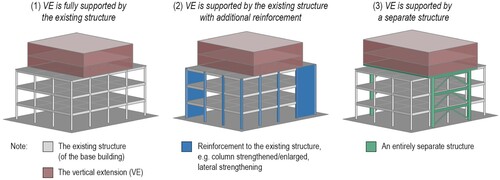
Construction strategies
In terms of construction strategies, two trends were examined: the structural materials used and the base building’s occupation condition while the VE is constructed.
Primary structural materials
Figure presents classifications of VE projects based on the structural materials of the base buildings and the VEs. If multiple materials were used in the project, the primary structural material is defined by the vertical structural component as the main load bearer (i.e. columns or vertical load-bearing walls). Concrete is the base buildings’ primary structural material for most projects (42%), followed by masonry (19%) and steel/cast-iron (15%). In 17 projects (10%), two or more materials were used, e.g. masonry bearing wall with cast iron/timber frame. Regarding structural material of VEs, steel is the most frequently used (57%), followed by timber (19%).
Base building’s occupation condition while VE is constructed
Two different occupation conditions were identified during the construction of VE – empty and occupied (Figure ).
For 106 projects (62%), the base building was empty during the construction of VE, either it has been abandoned or it was vacant due to the VE being built alongside a refurbishment and/or strengthening to the existing structures was required. For 36 projects (21%), the VE was constructed while the base building remained in operation. This was possible when no extensive structural work occurred in the base building, or in planned VE projects.
Discussion
This research constitutes the largest review of VEs globally, with 172 projects analysed across four main geographical regions. Figure summarises the key findings, including the most frequent base building and VE characteristics, trends, and approaches. As such, this diagram could be used to identify potentials for VE in a specific case, based on common factors found in this research. The following discussion points are highlighted.
Construction trends: an accelerating phenomenon
Based on location, Europe is the region with the most projects (56%). This aligns with the existing literature, with 19 out of 21 VE studies (90%) set within the European context, and evidence that VE has a long history in Europe (Eliason Citation2014). However, by including 44% of the projects from other regions, especially Asia and Oceania, which are rarely discussed, this research presents a more global review of VEs. Based on country, the UK has the most projects. In here, 33 out of the 52 projects identified (63%) are in London. The US is the next to have most projects, in which 26 out of 33 projects (79%) are in New York. This confirms that VEs are most economically viable in dense megacities such as London and New York, where land is hard to come by. In an interview, an architect noted:
Finding an area to build in a city as dense as New York is very, very hard, so the only thing you can do is building on top of other places. It's starting to happen a lot more and more.
Structural capacity: small interventions
Based on 172 projects reviewed, most VEs are 1–2 storeys (66%), with only 11% of projects (19 out of 172) above 4 storeys. Likewise, the percentage of storeys added for most projects is between 26-50%. This shows that most VEs are relatively short as compared to their base buildings – they add relatively modest amounts of extra capacity. This limitation of VE is found to be caused by most extensions relying (to at least some extent) on the excess capacity in the base buildings to support additional loads – a fact recognised by other research (Jellen and Memari Citation2014; Julistiono, Oldfield, and Cardellicchio Citation2023; Thornton, Hungspruke, and DeScenza Citation1991). This also aligns with results on structural support strategies, i.e. in 75% of the projects, VE was supported by the base building’s existing structure, either fully (35%) or with some reinforcement (40%). An entirely new structure supporting VE is less common (9%).
In terms of the base buildings’ original functions, an industrial building is the most frequent (32%), followed by office (27%) and residential (24%). Analysis of these three base building types in Table shows that projects with industrial buildings as the base of VEs have the highest average percentage of storeys added (67%). Also, they have the highest refurbishment rate and change of function (87% and 92%), and the lowest partial demolition rate (15%). All of this reveals that industrial buildings have a significant opportunity to accommodate VEs as they are typically designed to accommodate higher loads (see Figure ), and thus there is excess load capacity to support VE. In the interviews, an engineer shared that:
Very often old buildings have more capacity than people expect, especially in the case where they've changed use. The best example is the buildings that were once warehouse buildings, machine shops, industrial buildings, that are converted into flats. There, the loading goes from heavy loading to light loading.
For planned VEs, since the existing structure is designed to support a future extension, strategy 1 (fully supported) is the most obvious strategy. However, this research found that in three out of five planned VE projects, additional reinforcement to the existing structure was applied (strategy 2) since the time difference has caused a change in needs and the demand for VE to be realised with more storeys.
For unplanned VEs, the selection of structural strategies depends on the excess capacity in base buildings’ structure. Strategy 1 was used in 58 out of 167 unplanned projects (35%). Strategy 2 and 3 were used in 82 projects (49%) since the excess capacity was inadequate or lateral strengthening was required.
Table 4. Comparison of VE projects with three most frequent base building functions (industrial, office, residential).
Standing out: diverse form and facade design
Considering the form of VE, as compared to its base building, five distinct typologies are identified – extruded, setback, roof, rooftop cottages, freeform. Floerke et al. (Citation2014) presented six different forms (Table ). In both studies, it is found that the extruded form is most frequently used, likely to maximise the potential space created. However, this research finds that the setback form is most commonly applied if the base building has a heritage value. Moreover, rooftop cottages is a new form typology identified here, where multiple smaller individual buildings are placed atop a base building.
Regarding facade design, a distinct appearance between VEs and base buildings was found to be the most frequent strategy used. This aligns with heritage conservation principles (NSW Heritage Citation1999) in which a building should reflect its era, and thus any new addition should be visually distinctive. In contrast, a unified appearance is used the least, with there being technological and logistical challenges to ensure the new extension appears the same as the old building. Where it is used, this strategy often requires the base building to be reclad as part of a refurbishment.
Material technologies: steel dominates, but timber is growing
Results show that most VEs were built with steel (57%), followed by timber (19%). This reinforces that lightweight structural materials are preferable for VE to reduce loads on base buildings. Observation of the construction periods of steel and timber VEs (Figure ) shows that steel has been increasingly used in the past decade as VEs gain momentum, while timber has started to be used since 2000 and with a slower growth over the last seven years.
Comparing steel and timber VE projects (Table ), it is found that timber VEs have a lower average percentage of storeys added, but more frequently use structural strategy 1 (fully supported by the existing structure) (52%) and are more often occupied during construction (30%). Since timber is lighter (Foster and Reynolds Citation2018), using timber VE can minimise the base structure’s required strengthening and disturbance to the building occupants.
Table 5. Comparison of VE projects with steel and timber VEs.
Mass timber has emerged as a lightweight and efficient material, and is cost-effective due to being prefabricated for rapid assembly (Evison, Kremer, and Guiver Citation2018; Jelec, Varevac, and Rajcic Citation2018; Ramage et al. Citation2017). Timber is a low-carbon material, benefits from long-term carbon storage or sequestration (Churkina et al. Citation2020; Parajuli et al. Citation2018). Hence, the use of timber for VEs can maximise the environmental benefits of VEs and has been studied by existing research (Dind, Lufkin, and Rey Citation2018; Foster and Reynolds Citation2018; Soikkeli Citation2016; Wijnants, Allacker, and De Troyer Citation2019). Despite the potential of timber, Figure indicates that the use of timber for VE has not been fully utilised. This might be due to low awareness of timber potential, availability of technical information and regulatory limitations (Espinoza et al. Citation2015). For example, if projects in UK are excluded, from the remaining 45 projects in Europe, 18 have timber VEs (40%), while 20 have steel VEs (44%). If UK is included, the percentage of timber VEs is reduced to 27% (26 out of 97 projects) with 62% of projects having a steel VE. The lack of timber VEs in the UK is likely to be caused by restrictions for timber wall use in multi-storey buildings (Barker Citation2022; Carpenter Citation2020; Pacheco Citation2020).
Although most VEs are short, there are a few projects in this study that have taller VEs. 9 out of 172 projects (5%) have VEs higher than 10 storeys. These taller VEs were possible since the VE was either pre-planned, or by harnessing innovative construction methods such as lightweight materials and modular construction, alongside structural support strategy 2 or 3 (VE is supported by the existing structure with some reinforcement or by a separate structure). An example of this is De Karel Doorman (Figure (3)), where a 16-storey VE was built atop an originally 3-storey building by adding two new cores for lateral stability and applying ultra-lightweight materials. The engineers shared:
… we came up with the lightweight innovative structure: a lightweight steel frame, a timber flooring, gypsum ceilings and partition walls, timber facade. So, this building weighs only 260 kg/m2 gross floor area, whereas the traditional building in the Netherlands for housing weighs 5.5-6 times more.
Research limitations and future works
Several limitations are acknowledged in this research. Firstly, the sample size is unknown. Nevertheless, by including 172 projects with 44% outside Europe, this study represents the largest review of VE with the widest context. However, sample bias may still exist given a reliance on English language sources for data collection, for example. Hence, some regions may still be underrepresented as compared to the number of VEs that may exist. Also, while some project information was easily obtained, other data was more challenging to acquire, e.g. information on structural strategies and building materials. Thus, there is unknown data in some typologies, although efforts have been made to minimise this by gathering data from multiple sources and contacting relevant consultants and stakeholders.
In terms of future work, a gap in the knowledge seems to be what is the structural capacity of existing buildings – how much of a contribution can VE make to growth in cities at an urban scale? Is VE just for novel one-off projects, or can it make a real contribution to urban growth? Amer et al. (Citation2017) have partially addressed this by mapping urban densification potential through VE in Brussels and found that VE can accommodate 30% of expected population increase by 2040. However, the study only considered residential VEs and did not examine the base buildings’ structural capacity which this research finds is a key driver to VE. Future studies can be built to assess this capacity based on various building types. Moreover, excess structural capacity is a theme that emerged multiple times and considered crucial in the feasibility of VEs. While some studies presented a structural analysis of VEs, mostly are single project-based. Future research could seek to develop benchmarks for buildings’ capacity for VE, to provide cities with an understanding of the VE potential within their existing building stock to inform growth policies and support a retrofit first approach over demolish and rebuild.
While it is suggested repeatedly in the literature and many built project descriptions, the carbon benefit of VE as compared to conventional approaches to achieve additional floorspace are rarely measured. Pattison (Citation2021) and Papageorgiou (Citation2016) compare the environmental benefit of VE with demolish and rebuilt scenario, but only consider steel VEs. As such, future studies are required to measure the quantitative environmental benefits of VE compared to conventional approaches to densification across different materials, at a building or urban scale. Future research should also focus on VE in Asia where urban space shortages are an escalating phenomenon in many densely populated countries such as Macau, Singapore, and Hong Kong (World Bank Citation2022).
Conclusions
VE is an emerging novel approach to accommodate the rising demand for space while reducing the need for demolition of existing structures. By reviewing 172 VE projects worldwide, this research presents a holistic understanding of VE trends and technologies at a global level. Several significant conclusions are highlighted below:
Although VE has occurred across time, the evidence suggests it as a trend that is accelerating significantly in the past decade, especially in densely populated cities.
While most VEs are relatively small, one to two storeys in height, there is an opportunity to expand this capacity by employing lightweight materials and innovative structural strategies.
Industrial buildings are common base buildings for VE due to their higher structural capacity, and subsequently represent a significant opportunity for adaptive reuse, expansion, and densification of cities.
While the extruded form of VE is the most common to maximise VE’s footprint ratio, setback form is often chosen related to heritage preservation. Also, distinct facade of VEs is the most frequently applied to differentiate from the base buildings.
Most VEs are supported by the existing structures with some reinforcement, because although excess capacity in the existing structure can support additional vertical loads, lateral strengthening is sometimes required. In the case where the base building remains occupied, VEs are often fully supported by the existing structure and timber is often used to prevent disturbance to the occupants.
With the promotion of biomaterials to facilitate low-carbon architecture, increasing development of timber VE could potentially contribute to low whole lifecycle carbon buildings with less demolition, although the quantification of such carbon-saving is lacking in the literature.
Supplemental Material
Download PDF (823.1 KB)Data availability statement
The authors confirm that the data supporting the findings of this study are available within the article [and/or] its supplementary materials.
Disclosure statement
No potential conflict of interest was reported by the author(s).
Additional information
Funding
References
- ABCB. 2022. Understanding the NCC Building Classifications. https://www.abcb.gov.au/sites/default/files/resources/2022/UTNCC-Building-classifications.PDF.
- Ambrosini, Gustavo, and Guido Callegari. 2021. Roofscape Design: Regenerating the City upon the City. Berlin: JOVIS Verlag GmbH.
- Amer, Mohamed, Ahmed Mustafa, and Shady Attia. 2019. “Conceptual Framework for off-Site Roof Stacking Construction.” Journal of Building Engineering 26: 100873. https://doi.org/10.1016/j.jobe.2019.100873.
- Amer, Mohamed, Ahmed Mustafa, Jacques Teller, Shady Attia, and Sigrid Reiter. 2017. “A Methodology to Determine the Potential of Urban Densification Through Roof Stacking.” Sustainable Cities and Society 35: 677–691. https://doi.org/10.1016/j.scs.2017.09.021.
- Aparicio-Gonzalez, Elena, Silvia Domingo-Irigoyen, and Ana Sánchez-Ostiz. 2020. “Rooftop Extension as a Solution to Reach nZEB in Building Renovation. Application Through Typology Classification at a Neighborhood Level.” Sustainable Cities and Society 57: 102109. https://doi.org/10.1016/j.scs.2020.102109.
- Argenziano, M., D. Faiella, F. Bruni, C. De Angelis, M. Fraldi, and E. Mele. 2021. “Upwards - Vertical Extensions of Masonry Built Heritage for Sustainable and Antifragile Urban Densification.” Journal of Building Engineering 44: 102885. https://doi.org/10.1016/j.jobe.2021.102885.
- Artés, Joan, Gerardo Wadel, and Núria Martí. 2017. “Vertical Extension and Improving of Existing Buildings.” The Open Construction and Building Technology Journal 11: 83–94. https://doi.org/10.2174/1874836801711010083.
- Barker, Nat. 2022. “UK Government Introduces Restrictions for Timber in mid-Rise Buildings’ External Walls.” Dezeen, June 10. https://www.dezeen.com/2022/06/10/uk-government-timber-restrictions/.
- Bergsten, Susan. 2005. “Industrialised Building Systems: Vertical Extension of Existing Buildings by use of Light Gauge Steel Framing Systems and 4D CAD Tools.” Thesis, Lulea University of Technology.
- Bowen, Glenn A. 2009. “Document Analysis as a Qualitative Research Method.” Qualitative Research Journal 9 (2): 27–40. https://doi.org/10.3316/QRJ0902027.
- Broitman, Dani, and Eric Koomen. 2015. “Residential Density Change: Densification and Urban Expansion.” Computers, Environment and Urban Systems 54: 32–46. https://doi.org/10.1016/j.compenvurbsys.2015.05.006.
- Cappai, Francesco, Daniel Forgues, and Mathias Glaus. 2019. “A Methodological Approach for Evaluating Brownfield Redevelopment Projects.” Urban Science 3: 45. https://doi.org/10.3390/urbansci3020045.
- Carpenter, Andrew. 2020. “New Height Restrictions: A Potential Barrier on the Road to net Zero Targets.” Builders’ Merchants News, June 12. https://www.buildersmerchantsnews.co.uk/New-height-restrictions-A-potential-barrier-on-the-road-to-net-zero-targets/49684.
- Churkina, Galina, Alan Organschi, Christopher P. O. Reyer, Andrew Ruff, Kira Vinke, Zhu Liu, Barbara K. Reck, T. E. Graedel, and Hans Joachim Schellnhuber. 2020. “Buildings as a Global Carbon Sink.” Nature Sustainability 3 (4): 269–276. https://doi.org/10.1038/s41893-019-0462-4.
- De Wolf, Catherine, Francesco Pomponi, and Alice Moncaster. 2017. “Measuring Embodied Carbon Dioxide Equivalent of Buildings: A Review and Critique of Current Industry Practice.” Energy and Buildings 140: 68–80. https://doi.org/10.1016/j.enbuild.2017.01.075.
- Dind, Aleksis, Sophie Lufkin, and Emmanuel Rey. 2018. “A Modular Timber Construction System for the Sustainable Vertical Extension of Office Buildings.” Designs 2: 30. https://doi.org/10.3390/designs2030030.
- Dulić, Olivera, and Milena Krklješ. 2014. “Brownfield Redevelopment as a Strategy for Preventing Urban Sprawl.” Paper Presented at the Internacionalni Nauco-Strucni Skup GNP 2014 Gradevinarstvo - Nauka I Praksa, Zabljak, February 17-21. https://www.researchgate.net/publication/281651820_Brownfield_Redevelopment_as_a_Strategy_for_Preventing_Urban_Sprawl.
- Eliason, Mike. 2014. “Aufstockung: Innovative Density.” The Urbanist, July 24. https://www.theurbanist.org/2014/07/24/aufstockung-innovative-density/#.
- Espinoza, Omar, Vladimir Rodriguez Trujillo, Maria Fernanda Laguarda Mallo, and Urs Buehlmann. 2015. “Cross-laminated Timber: Status and Research Needs in Europe.” BioResources 11 (1): 281–295. https://doi.org/10.15376/biores.11.1.281-295.
- Evison, David Craig, Paul D. Kremer, and Jason Guiver. 2018. “Mass Timber Construction In Australia And New Zealand—Status, And Economic And Environmental Influences On Adoption.” Wood and Fiber Science 50: 128–138. https://doi.org/10.22382/wfs-2018-046.
- Floerke, Paul, Sonja WeiB, Lara Stein, and Malte Wagner. 2014. Typologienkatalog - Gebaudeaufstockungen (Catalogue of Typologies - Rooftop Extensions). Dusseldorf: Bauforumstahl. https://bauforumstahl.de/upload/publications/150301_Typologienkatalog_Onlineausgabe_k.pdf.
- Foster, Robert M., and Thomas P. S. Reynolds. 2018. “Lightweighting with Timber: An Opportunity for More Sustainable Urban Densification.” Journal of Architectural Engineering 24 (1): 02518001. https://doi.org/10.1061/(ASCE)AE.1943-5568.0000301.
- González-Redondo, Esperanza. 2022. “Adding new Floors to old Timber-Framed Buildings: An Assessment of Demolished and Preserved Courtyard Houses in the Historic Centre of Madrid.” Frontiers of Architectural Research 11 (2): 255–277. https://doi.org/10.1016/j.foar.2021.10.009.
- Habitat for Humanity. n.d. “What is a Slum? Definition of a Global Housing Crisis.” Accessed April 20, 2022. https://www.habitatforhumanity.org.uk/what-we-do/slum-rehabilitation/what-is-a-slum/.
- Helal, James, André Stephan, and Robert H. Crawford. 2020. “The Influence of Structural Design Methods on the Embodied Greenhouse gas Emissions of Structural Systems for Tall Buildings.” Structures 24: 650–665. https://doi.org/10.1016/j.istruc.2020.01.026.
- Hermens, Maurice, Michiel Visscher, and John Kraus. 2014. “Ultra Light Weight Solutions for Sustainable Urban Densification.” Paper Presented at the CTBUH 2014 Shanghai Conference, Shanghai. https://global.ctbuh.org/resources/papers/download/1887-ultra-light-weight-solutions-for-sustainable-urban-densification.pdf.
- Hernandez-Palacio, Fabio. 2014. “On The Feasibility and Effectiveness of Urban Densification in Norway.” Nordic Journal of Architectural Research 2: 83–112. https://www.researchgate.net/publication/279955113_On_The_Feasibility_and_Effectiveness_of_Urban_Densification_in_Norway.
- Jelec, Mario, Damir Varevac, and Vlatka Rajcic. 2018. “Cross-laminated Timber (CLT) - A State of the art Report.” Journal of the Croatian Association of Civil Engineers 70 (2): 75–95. https://doi.org/10.14256/jce.2071.2017.
- Jellen, Anthony C., and Ali M. Memari. 2014. “Residential Vertical Expansion of Existing Commercial Buildings Using Modular Construction Methods.” Paper Presented at the 2nd Residential Building Design & Construction Conference, Pennsylvania, February 19-20. https://www.phrc.psu.edu/assets/docs/Publications/2014RBDCCPapers/Jellen-2014-RBDCC.pdf.
- Jellen, Anthony C., and Ali M. Memari. 2018. “Residential Vertical Expansions Using Modular Construction.” Journal of Architectural Engineering 24 (3): 04018019. https://doi.org/10.1061/(ASCE)AE.1943-5568.0000322.
- Julistiono, Eunike Kristi, Philip Oldfield, and Luciano Cardellicchio. 2023. “Vertical Extensions: Stakeholder Perspectives on Development Decisions and Construction Strategies "Journal of Architectural Engineering 29 (2): 04023010. https://doi.org/10.1061/JAEIED.AEENG-1474.
- Lešnik, Maja, Stojan Kravanja, Miroslav Premrov, and Vesna Žegarac Leskovar. 2020. “Optimal Design of Timber-Glass Upgrade Modules for Vertical Building Extension from the Viewpoints of Energy Efficiency and Visual Comfort.” Applied Energy 270: 115173. https://doi.org/10.1016/j.apenergy.2020.115173.
- Morris, Mark. 2021. “Upward Extensions: Adding 2 Storeys to Blocks of Flats Without Planning Permission.” Accessed October 26, 2021. https://urbanistarchitecture.co.uk/extending-block-flats-upwards/.
- Mouratidis, Kostas. 2019. “Compact City, Urban Sprawl, and Subjective Well-Being.” Cities 92: 261–272. https://doi.org/10.1016/j.cities.2019.04.013.
- Nadoushani, Z.S. Moussavi, and A., and Akbarnezhad. 2015. “Comparative Analysis of Embodied Carbon Associated with Alternative Structural Systems.” Proceedings of the 32nd International Symposium on Automation and Robotics in Construction: 1–8. https://doi.org/10.22260/ISARC2015/0115.
- Neuman, Michael. 2005. “The Compact City Fallacy.” Journal of Planning Education and Research 25: 11–26. https://doi.org/10.1177/0739456X04270466.
- NSW Heritage. 1999. Principles of Conservation Work on Heritage Places. https://www.environment.nsw.gov.au/-/media/OEH/Corporate-Site/Documents/Heritage/principles-of-conservation-work-on-heritage-places.pdf.
- Oldfield, Philip. 2019. The Sustainable Tall Building: A Design Primer. New York: Routledge.
- Pacheco, Antonio. 2020. “Citing Grenfell, UK Moves to Limit Mass Timber Construction.” Archinect News, May 26. https://archinect.com/news/article/150199353/citing-grenfell-uk-moves-to-limit-mass-timber-construction.
- Papageorgiou, Maria. 2016. “Optimal Vertical Extension: A Study of Costs and Emvironmental Impact for Structural Engineers.” Master Thesis. Delf University of Technology.
- Parajuli, Rajan, Charles Gale, Richard Vlosky, and Roy O. Martin III. 2018. “An Overview of Cross-Laminated Timber in North America.” In Increasing the Use of Wood in the Global Bio-Economy, edited by Branko Glavonjic, 217–225. Belgrade: University of Belgrade.
- Pattison, Jenny. 2021. “Vertical Extensions: Technical Challenges and Carbon Impact.” The Structural Engineer 99 (5): 12–15. https://www.istructe.org/journal/volumes/volume-99-(2021)/issue-5/vertical-extensions-technical-challenges-carbon/.
- Pomponi, F., and A. Moncaster. 2016. “Embodied Carbon Mitigation and Reduction in the Built Environment - What Does the Evidence say?” Journal of Environmental Management 181: 687–700. https://doi.org/10.1016/j.jenvman.2016.08.036.
- Ramage, Michael H., Henry Burridge, Marta Busse-Wicher, George Fereday, Thomas Reynolds, Darshil U. Shah, Guanglu Wu, et al. 2017. “The Wood from the Trees: The use of Timber in Construction.” Renewable and Sustainable Energy Reviews 68: 333–359. https://doi.org/10.1016/j.rser.2016.09.107.
- Robati, Mehdi, Philip Oldfield, Ali Akbar Nezhad, David G. Carmichael, and Aysu Kuru. 2021. “Carbon Value Engineering: A Framework for Integrating Embodied Carbon and Cost Reduction Strategies in Building Design.” Building and Environment 192: 107620. https://doi.org/10.1016/j.buildenv.2021.107620.
- Röck, Martin, Marcella Ruschi Mendes Saade, Maria Balouktsi, Freja Nygaard Rasmussen, Harpa Birgisdottir, Rolf Frischknecht, Guillaume Habert, Thomas Lützkendorf, and Alexander Passer. 2020. “Embodied GHG Emissions of Buildings – The Hidden Challenge for Effective Climate Change Mitigation.” Applied Energy 258: 114107. https://doi.org/10.1016/j.apenergy.2019.114107.
- Smith, Garry. 2008. “Contributions of Brownfield Development to Urban Internal Expansion and Urban Renewal in Practice.” Paper Presented at the 44th ISOCARP Congress 2008, Dalian, People’s Republic of China, 19-23 September. http://www.isocarp.net/Data/case_studies/1202.pdf.
- Soikkeli, Anu. 2016. “Additional Floors in old Apartment Blocks.” Energy Procedia 96: 815–823. https://doi.org/10.1016/j.egypro.2016.09.143.
- Stevenson, Mark, Jason Thompson, Thiago Hérick de Sá, Reid Ewing, Dinesh Mohan, Rod McClure, Ian Roberts, et al. 2016. “Land use, Transport, and Population Health: Estimating the Health Benefits of Compact Cities.” The Lancet 388 (10062): 2925–2935. https://doi.org/10.1016/S0140-6736(16)30067-8.
- Sundling, Rikard. 2019. “A Development Process for Extending Buildings Vertically – Based on a Case Study of Four Extended Buildings.” Construction Innovation 19 (3): 367–385. https://doi.org/10.1108/CI-05-2018-0040.
- Thornton, Charles H., Udom Hungspruke, and Robert P. DeScenza. 1991. “Vertical Expansion of Vintage Buildings.” Modern Steel Construction 31 (6): 35–37. https://www.aisc.org/globalassets/modern-steel/archives/1961-1995/1991v06.pdf.
- Tight, Malcolm. 2019. Documentary Research in the Social Sciences. City Road: Sage Publications.
- UNE, and IEA. 2017. Towards a Zero-Emission, Efficient, and Resilient Buildings and Construction Sector: Global Status Report 2017. https://www.worldgbc.org/sites/default/files/UNEP%20188_GABC_en%20%28web%29.pdf.
- UNEP. 2021. 2021 Global Status Report for Buildings and Construction: Towards a Zero-Emission, Efficient and Resilient Buildings and Construction Sector. Nairobi. https://globalabc.org/sites/default/files/2021-10/GABC_Buildings-GSR-2021_BOOK.pdf.
- United Nations. 2017. New Urban Agenda. http://habitat3.org/wp-content/uploads/NUA-English.pdf.
- United Nations. 2019. World Urbanization Prospects: The 2018 Revision. New York: United Nations. https://population.un.org/wup/Publications/Files/WUP2018-Report.pdf.
- Uwimana, Leopold. 2011. “Adding Stories on top of the Existing Building by Using Steel Structures, Case Study: Dillenburgsingel Project in Leidschendam.” Thesis. DELFT University of Technology.
- Wijnants, L., K. Allacker, and F. De Troyer. 2019. “Life-cycle Assessment of Timber Frame Constructions - The Case of Rooftop Extensions.” Journal of Cleaner Production 216: 333–345. https://doi.org/10.1016/j.jclepro.2018.12.278.
- World Bank. 2022. “Countries by Population Density, Countries by Density 2022.” Accessed April 20, 2022. https://worldpopulationreview.com/country-rankings/countries-by-density.

